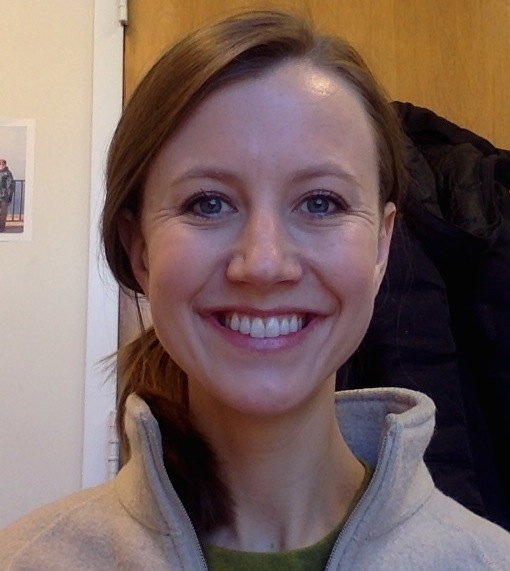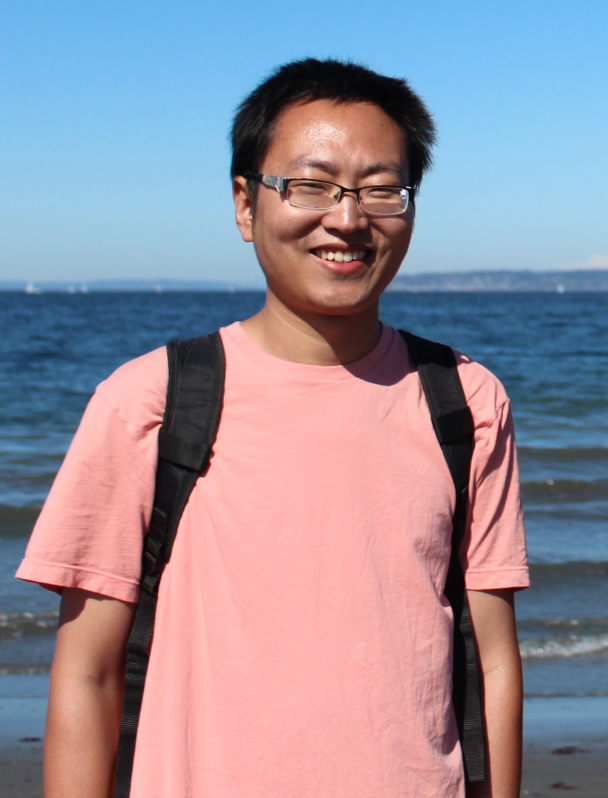
Beads of Mercury
story by Helen Hill

Mercury (Hg) is a long-lived environmental pollutant that travels globally through the atmosphere, posing risks to humans and the environment far from emission sources. This month we take a look at a joint Harvard – MIT study which uses MITgcm to explore the biogeochemistry of riverine mercury.
Most of the Hg discharged by rivers is sequestered by burial of benthic sediment in estuaries or the coastal zone, but some is evaded to the atmosphere and some is exported to the open ocean. Added to this, pathways for aquatic Hg cycling are rather complex with the notoriously toxic heavy metal passing through various inorganic and organic forms. Ultimately however, the Hg that doesn’t evade back to the atmosphere by volatilization ends up in the sediments, fish and wildlife.
Now a team involving researchers Yanxu Zhang, Daniel Jacob, Helen Amos, Michael Long, and Elsie Sunderland from Harvard’s John A. Paulson School of Engineering and Applied Science, Harvard’s Department of Environmental Health, and Stephanie Dutkiewicz from MIT’s Department of Earth, Atmospheric and Planetary Sciences has developed a new 3-D simulation for global aquatic Hg cycling using MITgcm.
The team’s implementation, which includes plankton dynamics and carbon, coupled to inorganic Hg chemistry successfully reproduces distributions consistent with the observed spatial patterns and magnitudes of surface ocean Hg concentrations.
Among their key findings, Yanxu et al. find that most riverine Hg discharged to the ocean is refractory, that is, once it enters the ocean it goes through no further changes. They also found that long range transport of riverine Hg to be enhanced by major ocean currents, and, interestingly, that circumpolar rivers carry more reactive Hg than the mid- and low-latitudal ones. Finally the team report finding that rivers are major contributors to the elevated Hg loads observed in the Arctic atmosphere.
Yanxu says, “I used to work with another ocean model, but we decided to switch to MITgcm because we can take advantage of the DARWIN project. With Steph [Dutkiewicz’s] help, we developed a new model that couples inorganic mercury chemistry with the plankton and carbon cycle and then successfully applied this model to the fate and transport of riverine Hg (Zhang et al., 2015; Amos et al., 2014). Another application of this model was to interpret the observed mercury concentrations over the tropical Pacific Ocean (Soerensen et al., 2014). Currently, we are looking at the production of organic mercury and its trophic transfer in the plankton food web. Meanwhile, we are applying the MITgcm-Hg simulation as a temple for other pollutants such as Polychlorinated biphenyl (PCB) and Perfluorooctanesulfonic substances (PFOS). ”
To find out more contact Yanxu.
Related Publications
Amos et al. (2014), Global biogeochemical implications of mercury discharges from rivers and sediment burial, Environ. Sci. Technol., 48 (16), pp 9514–9522, doi: 10.1021/es502134t
Soerensen et al. 2014: Elemental mercury concentrations and fluxes in the tropical atmosphere and ocean, Environ. Sci. Technol., 48 (19), pp 11312–11319, doi: 10.1021/es503109p
About the Researchers

Helen Amos has been using MITgcm since 2014. Outside of work, she loves to hike and cook. She is currently learning German.
This Month’s Featured Publication
- Yanxu Zhang, Daniel J. Jacob, Stephanie Dutkiewicz, Helen M. Amos, Michael S. Long, and Elsie M. Sunderland (2015), Biogeochemical drivers of the fate of riverine mercury discharged to the global and Arctic oceans, Global Biogeochemical Cycles, online 2 June 2015, doi: 10.1002/2015GB005124
Other New Publications this Month
Nils Brüggemann and Carsten Eden (2015), Routes to dissipation under different dynamical conditions, Journal of Physical Oceanography 2015 ; e-View; doi: 10.1175/JPO-D-14-0205.1
Brunetti, Maura; Vérard, Christian; Perroud, Marjorie (2015), Coupled Ocean-Atmosphere Climate Simulations of the Callovian (Middle Jurassic) with Full Topographic Surface, EGU General Assembly 2015, held 12-17 April, 2015 in Vienna, Austria. id.5288
Emanuela Caiaffa, Luigi La Porta, Maurizio Pollino (2015), Geomatics in Climate Services and Local Information: A Case Study for Mediterranean Area, Computational Science and Its Applications — ICCSA 2015, Lecture Notes in Computer Science Volume 9157, 2015, pp 540-555, doi: 10.1007/978-3-319-21470-2_39
Dustin Carroll, David A. Sutherland, Emily L. Shroyer, Jonathan D. Nash, Ginny A. Catania, and Leigh A. Stearns (2015), Modeling Turbulent Subglacial Meltwater Plumes: Implications for Fjord-Scale Buoyancy-Driven Circulation, Journal of Physical Oceanography 2015 ; e-View, doi: 10.1175/JPO-D-15-0033.1
Fanny Chenillat, Bruno Blanke, Nicolas Grima, Peter J. S. Franks, Xavier Capet, and Pascal Rivière (2015), Quantifying tracer dynamics in moving fluids: a combined Eulerian-Lagrangian approach, Front. Environ. Sci. 3:43. doi: 10.3389/fenvs.2015.00043
Gael Forget and R.M. Ponte (2015), The partition of regional sea level variability, Progress in Oceanography (In Press), doi: 10.1016/j.pocean.2015.06.002
Sandy Grégorio, Thierry Penduff, Guillaume Sérazin, Jean-Marc Molines, Bernard Barnier, and Joël Hirschi (2015), Intrinsic variability of the Atlantic meridional overturning circulation at interannual-to-multidecadal timescales, Journal of Physical Oceanography 2015 ; e-View, doi: 10.1175/JPO-D-14-0163.1
Guo, Daquan; Zhan, Peng; Kartadikaria, Aditya; Akylas, Triantaphyllos; Hoteit, Ibrahim (2015), On the generation and evolution of internal solitary waves in the southern Red Sea, EGU General Assembly 2015, held 12-17 April, 2015 in Vienna, Austria. id.4499
Jamet, Quentin; Huck, Thierry; de Verdière, Alain Colin; Arzel, Olivier; Campin, Jean-Michel (2015), Role of the Ocean-Atmosphere interactions for the Atlantic Multidecadal Variability in an idealized coupled model, EGU General Assembly, held 12-17 April, 2015 in Vienna, Austria. id.502
F. Lemarié, L. Debreu, G. Madec, J. Demange, J.M. Molines, M. Honnorat (2015), Stability constraints for oceanic numerical models: Implications for the formulation of time and space discretizations, Ocean Modelling, Available online 26 June 2015, doi: 10.1016/j.ocemod.2015.06.006
Andrew McC. Hogg, Michael P. Meredith, Don P. Chambers, E. Povl Abrahamsen, Chris W. Hughes, and Adele K. Morrison (2015), Recent trends in the Southern Ocean eddy field, , J. Geophys. Res. Oceans, 120, 257–267, doi: 10.1002/2014JC010470
Jan-Dirk Matthießen, Richard J. Greatbatch, Peter Brandt, Martin Claus, Sven-Helge Didwischus (2015), Influence of the equatorial deep jets on the north equatorial countercurrent, Ocean Dynamics June 2015, doi: 10.1007/s10236-015-0855-5
Özsoy, Emin; Sannino, Gianmaria; Sözer, Adil; Gürses, Özgür (2015), A Review of the Turkish Straits System: Challenges for Modeling, Inter-Basin Coupling and the Environment, EGU General Assembly 2015, held 12-17 April, 2015 in Vienna, Austria. id.14662
Paul, André; Mulitza, Stefan (2015), Stratigraphic significance and global distribution of the δ13C Suess effect during the Anthropocene, EGU General Assembly 2015, held 12-17 April, 2015 in Vienna, Austria. id.9819
Perroud, Marjorie; Brunetti, Maura; Vérard, Christian (2015), Sensitivity of the Ocean System to the Bathymetry in Numerical Simulations of Climate, EGU General Assembly 2015, held 12-17 April, 2015 in Vienna, Austria. id.5336
J. Piwonski and T. Slawig (2015), Metos3D: a marine ecosystem toolkit for optimization and simulation in 3-D –Simulation Package v0.2, Geosci. Model Dev. Discuss., 8, 4401–4451, 2015, doi: 10.5194/gmdd-8-4401-2015
Jing-Ling Ren, Ji-Liang Xuan, Zhao-Wei Wang, Daji Huang, Jing Zhang (2015), Cross-shelf transport of terrestrial Al enhanced by the transition of northeasterly to southwesterly monsoon wind over the East China Sea, Journal of Geophysical Research Oceans (accepted), doi: 10.1002/2014JC010655
Takahiro Toyoda et al. (2015), Intercomparison and validation of the mixed layer depth fields of global ocean syntheses, Climate Dynamics
online May 28 2015, doi: 10.1007/s00382-015-2637-7
Eirini Varotsou, Kerstin Jochumsen, Nuno Serra, Dagmar Kieke, Linn Schneider (2015), Interannual transport variability of Upper Labrador Sea Water at Flemish Cap, Journal of Physical Research Oceans (accepted), doi: 10.1002/2015JC010705
Vasiliy Vlasenko and Nataliya Stashchuk (2015), Internal tides near the Celtic Sea shelf break: A new look at a well known problem, Deep Sea Research Part I: Oceanographic Research Papers, Volume 103, September 2015, Pages 24–36, doi: 10.1016/j.dsr.2015.05.003
Yanxu Zhang, Daniel J. Jacob, Stephanie Dutkiewicz, Helen M. Amos, Michael S. Long, and Elsie M. Sunderland (2015), Biogeochemical drivers of the fate of riverine mercury discharged to the global and Arctic oceans, Global Biogeochemical Cycles, online 2 June 2015, doi: 10.1002/2015GB005124
Zhan, Peng; Subramanian, Aneesh C.; Kartadikaria, Aditya R.; Hoteit, Ibrahim (2015), Eddy energy sources and flux in the Red Sea, EGU General Assembly 2015, held 12-17 April, 2015 in Vienna, Austria. id.3575
Do you have news about research using MITgcm? We are looking for contributions to these pages. If you have an interesting MITgcm project (ocean, atmosphere, sea-ice, physics, biology or otherwise) that you want to tell people about, get in touch. To make a post, contact Helen

